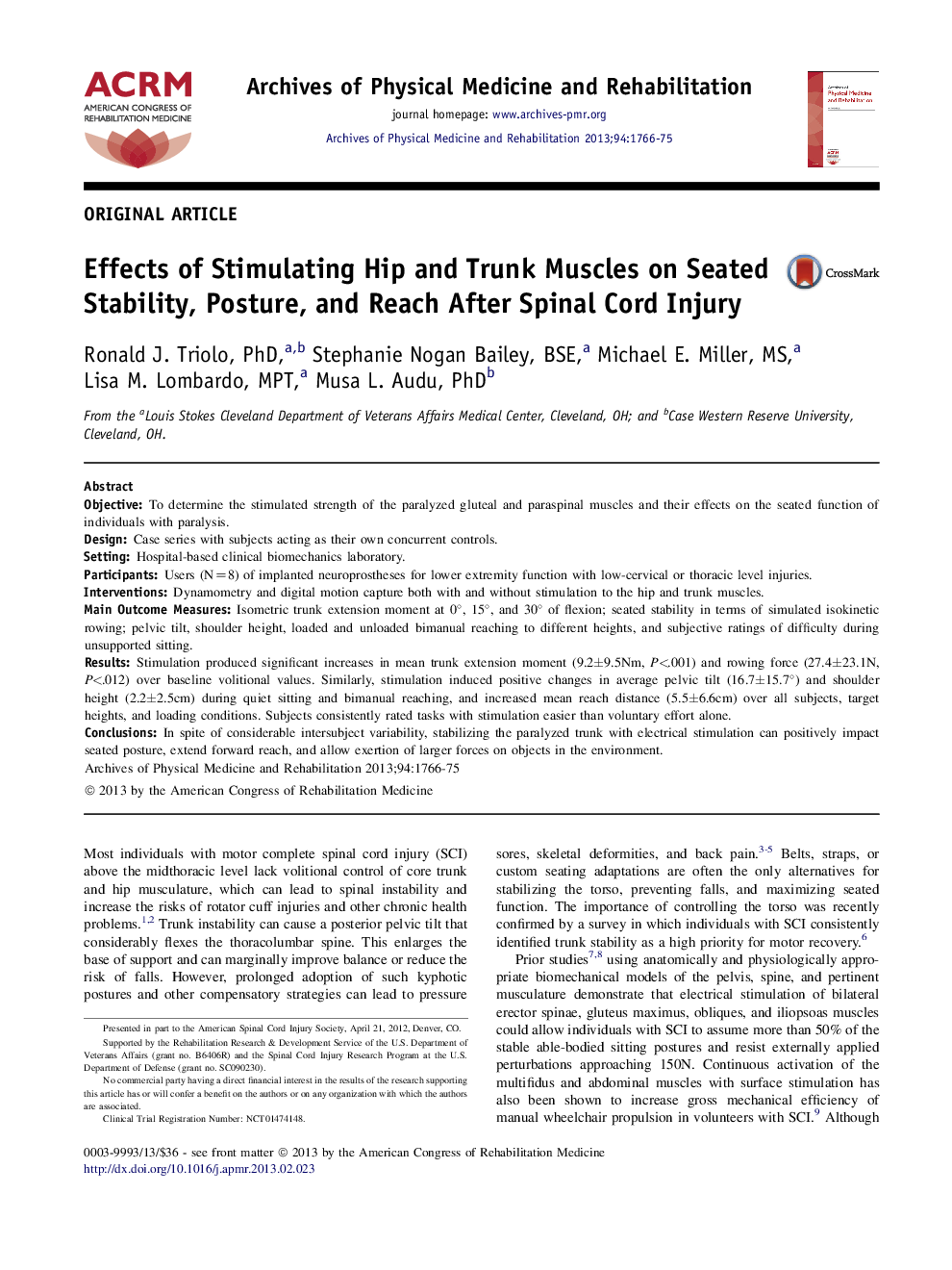| Article ID | Journal | Published Year | Pages | File Type |
|---|---|---|---|---|
| 3448973 | Archives of Physical Medicine and Rehabilitation | 2013 | 10 Pages |
ObjectiveTo determine the stimulated strength of the paralyzed gluteal and paraspinal muscles and their effects on the seated function of individuals with paralysis.DesignCase series with subjects acting as their own concurrent controls.SettingHospital-based clinical biomechanics laboratory.ParticipantsUsers (N=8) of implanted neuroprostheses for lower extremity function with low-cervical or thoracic level injuries.InterventionsDynamometry and digital motion capture both with and without stimulation to the hip and trunk muscles.Main Outcome MeasuresIsometric trunk extension moment at 0°, 15°, and 30° of flexion; seated stability in terms of simulated isokinetic rowing; pelvic tilt, shoulder height, loaded and unloaded bimanual reaching to different heights, and subjective ratings of difficulty during unsupported sitting.ResultsStimulation produced significant increases in mean trunk extension moment (9.2±9.5Nm, P<.001) and rowing force (27.4±23.1N, P<.012) over baseline volitional values. Similarly, stimulation induced positive changes in average pelvic tilt (16.7±15.7°) and shoulder height (2.2±2.5cm) during quiet sitting and bimanual reaching, and increased mean reach distance (5.5±6.6cm) over all subjects, target heights, and loading conditions. Subjects consistently rated tasks with stimulation easier than voluntary effort alone.ConclusionsIn spite of considerable intersubject variability, stabilizing the paralyzed trunk with electrical stimulation can positively impact seated posture, extend forward reach, and allow exertion of larger forces on objects in the environment.
